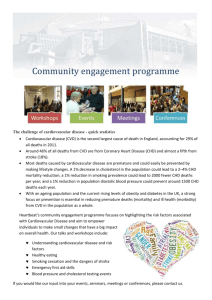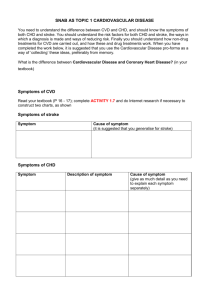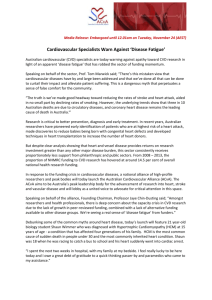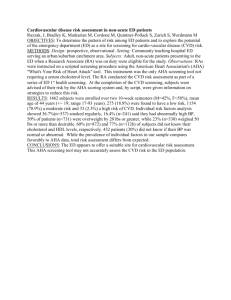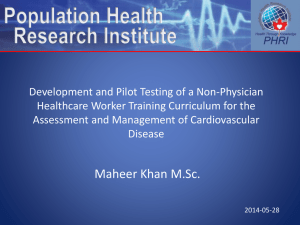Group Project on Study Design: PolypillxAspirin Project Notes
advertisement
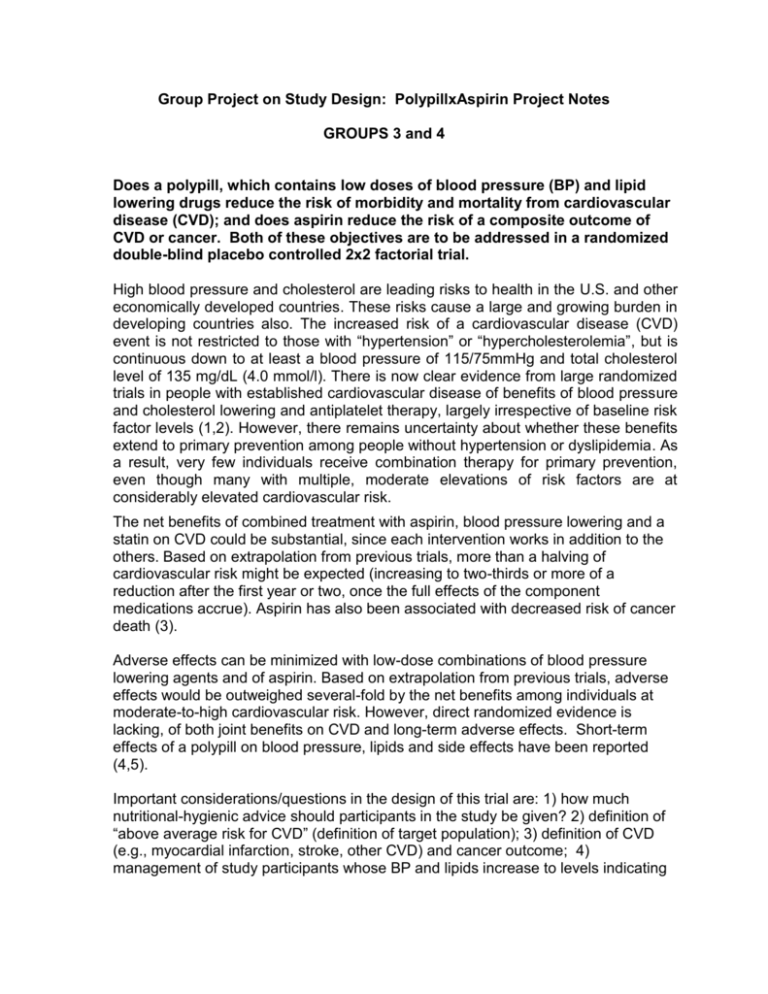
Group Project on Study Design: PolypillxAspirin Project Notes GROUPS 3 and 4 Does a polypill, which contains low doses of blood pressure (BP) and lipid lowering drugs reduce the risk of morbidity and mortality from cardiovascular disease (CVD); and does aspirin reduce the risk of a composite outcome of CVD or cancer. Both of these objectives are to be addressed in a randomized double-blind placebo controlled 2x2 factorial trial. High blood pressure and cholesterol are leading risks to health in the U.S. and other economically developed countries. These risks cause a large and growing burden in developing countries also. The increased risk of a cardiovascular disease (CVD) event is not restricted to those with “hypertension” or “hypercholesterolemia”, but is continuous down to at least a blood pressure of 115/75mmHg and total cholesterol level of 135 mg/dL (4.0 mmol/l). There is now clear evidence from large randomized trials in people with established cardiovascular disease of benefits of blood pressure and cholesterol lowering and antiplatelet therapy, largely irrespective of baseline risk factor levels (1,2). However, there remains uncertainty about whether these benefits extend to primary prevention among people without hypertension or dyslipidemia. As a result, very few individuals receive combination therapy for primary prevention, even though many with multiple, moderate elevations of risk factors are at considerably elevated cardiovascular risk. The net benefits of combined treatment with aspirin, blood pressure lowering and a statin on CVD could be substantial, since each intervention works in addition to the others. Based on extrapolation from previous trials, more than a halving of cardiovascular risk might be expected (increasing to two-thirds or more of a reduction after the first year or two, once the full effects of the component medications accrue). Aspirin has also been associated with decreased risk of cancer death (3). Adverse effects can be minimized with low-dose combinations of blood pressure lowering agents and of aspirin. Based on extrapolation from previous trials, adverse effects would be outweighed several-fold by the net benefits among individuals at moderate-to-high cardiovascular risk. However, direct randomized evidence is lacking, of both joint benefits on CVD and long-term adverse effects. Short-term effects of a polypill on blood pressure, lipids and side effects have been reported (4,5). Important considerations/questions in the design of this trial are: 1) how much nutritional-hygienic advice should participants in the study be given? 2) definition of “above average risk for CVD” (definition of target population); 3) definition of CVD (e.g., myocardial infarction, stroke, other CVD) and cancer outcome; 4) management of study participants whose BP and lipids increase to levels indicating treatment during follow-up; and 5) potential for interaction and impact on sample size. You can assume that the polypill contains low doses of a diuretic (chlorthalidone), an ACE inhibitior (lisinopril), and a statin (simavastatin). Placebos are available for both the polypill and aspirin Some literature to get you started is listed below: 1. Wald, N. and M. Law, A strategy to reduce cardiovascular disease by more than 80%. British Medical Journal, 2003. 326: p. 1419-1424. 2. Reddy KS. The preventive polypill – much promise, insufficient evidence. N Engl J Med 2007; 356:212. 3. Rothwell PM et al. Short-term effects of daily aspirin on cancer incidence, mortality, and non-vascular death: analysis of the time course of risks and benefits in 51 randomised controlled trials. Lancet 2012; 379:1602-1612. 4. The Indian Polycap Study. Effects of a polypill (Polycap) on risk factors in middle-aged individuals without cardiovascular disease. Lancet 2009; 373:1341-1351. 5. Pill Collaborative Group. An international randomized placebo-controlled trial of a four-component combination pill (“Polypill”) in people with raised cardiovascular risk. PLoS One 2011.

